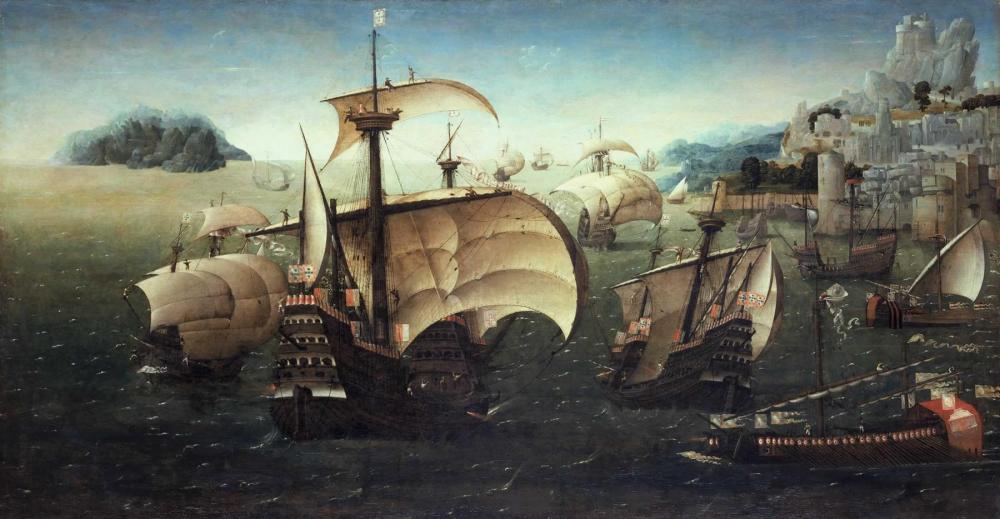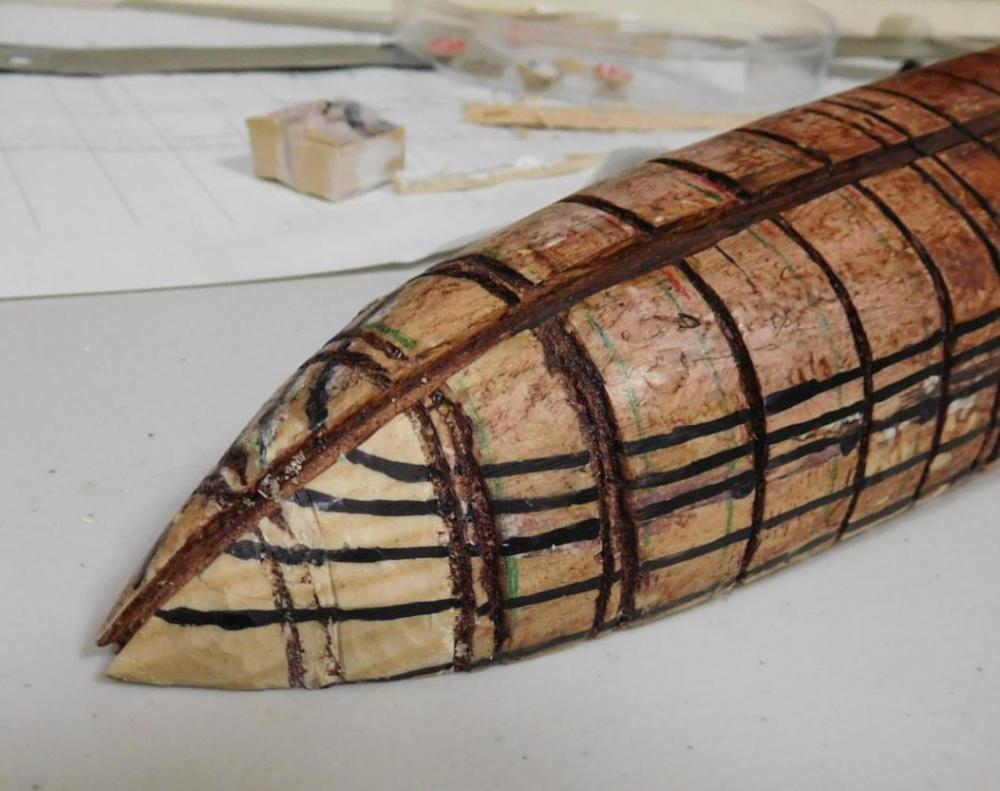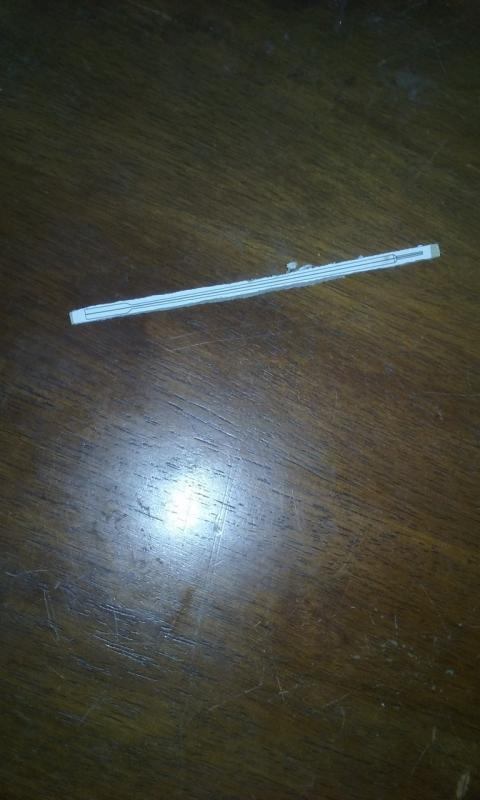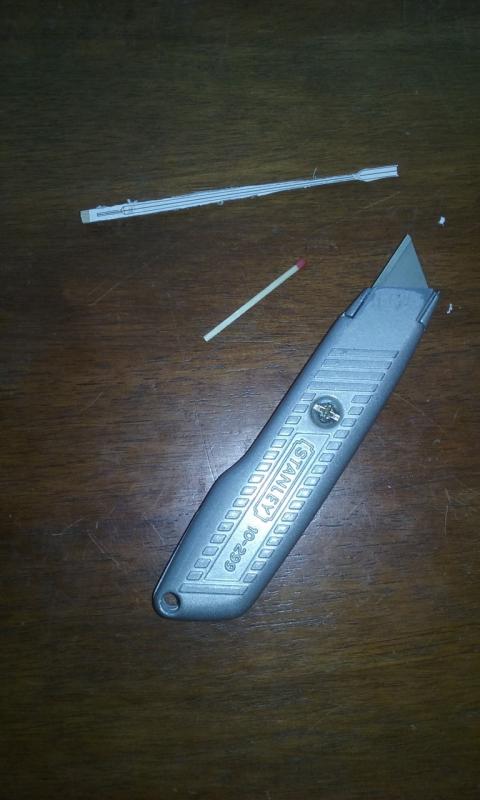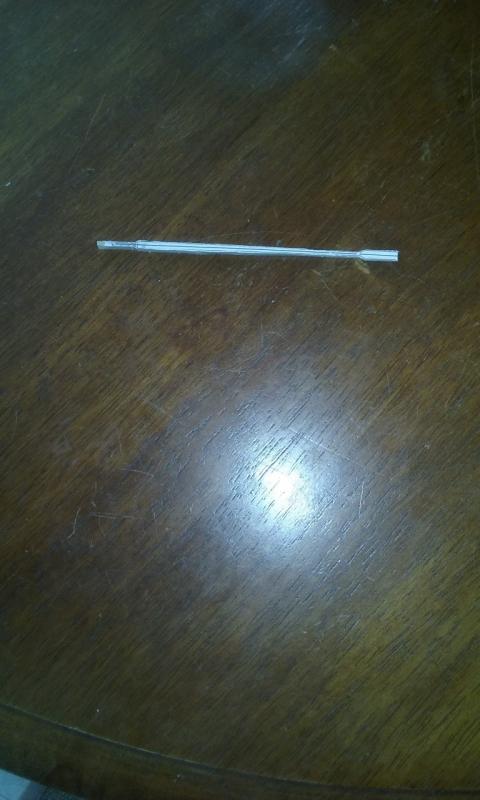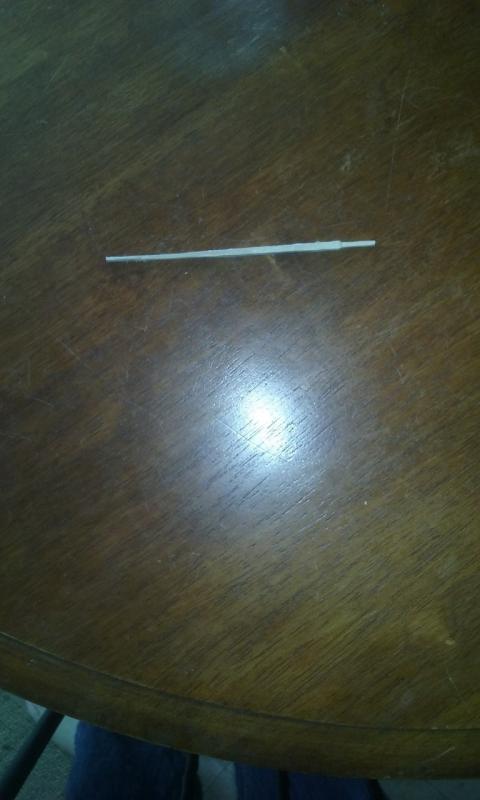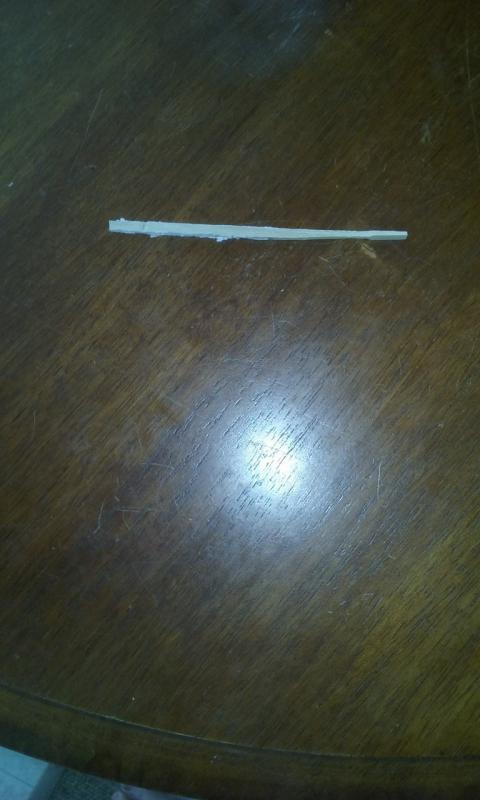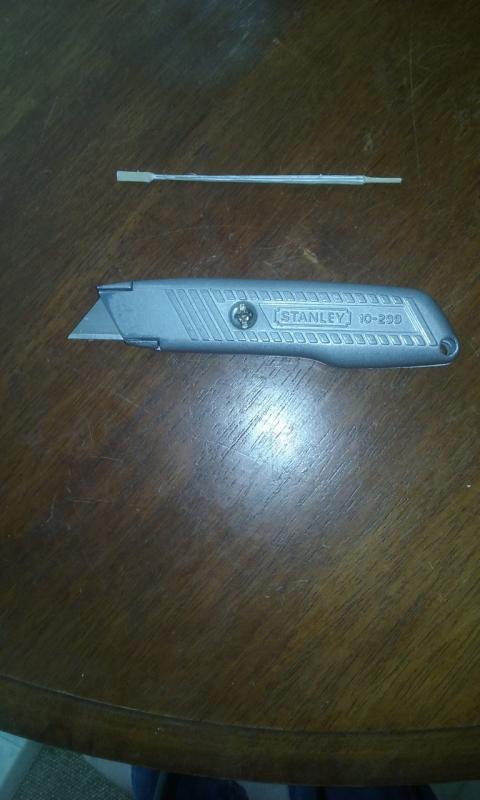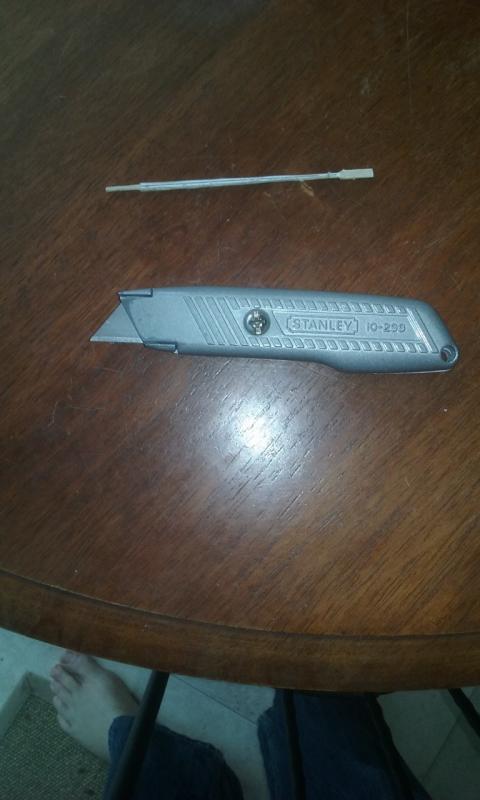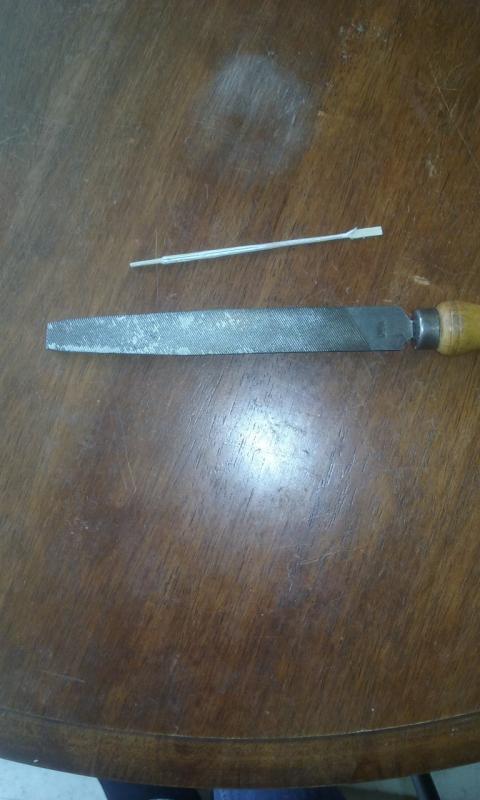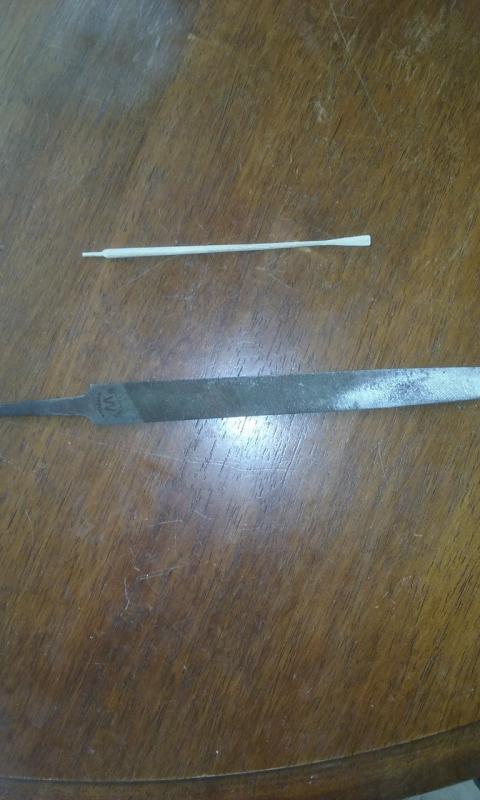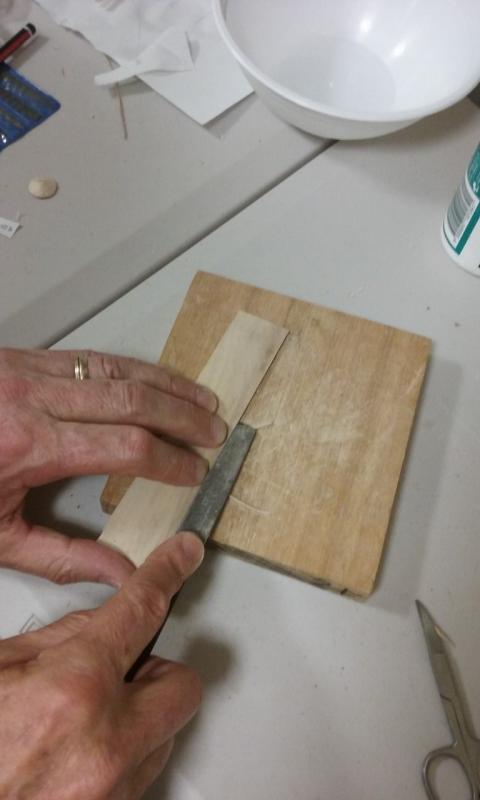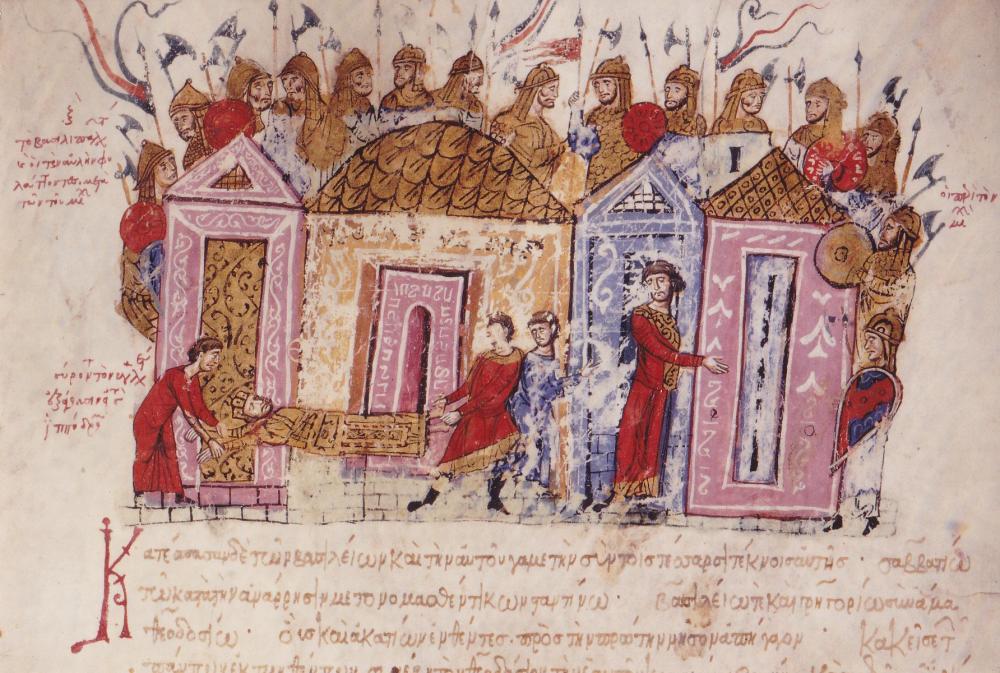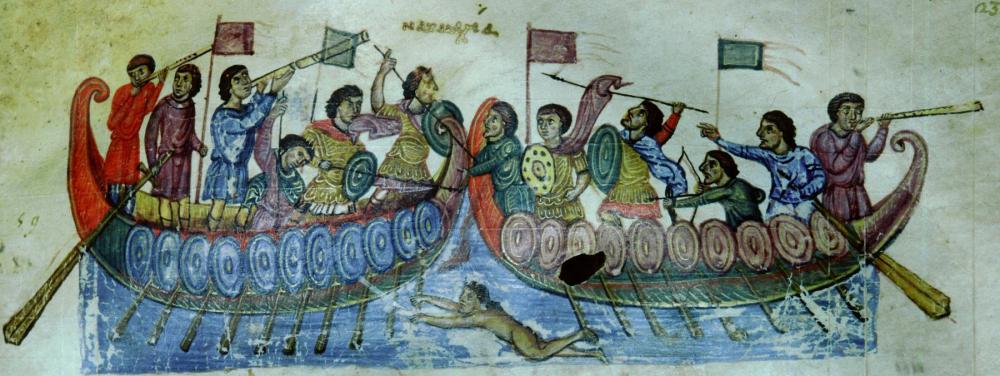-
Posts
7,986 -
Joined
-
Last visited
Content Type
Profiles
Forums
Gallery
Events
Everything posted by Louie da fly
-
This picture of the Santa Caterina do Monto Sinai, though a little late, shows two sheets holding the centre of the mainsail back, plus two others starboard of it (presumably mirrored on the port side), and the sail pressed hardup against the forestay. Steven
-
I've now cut and soaked and bent into place 30 new frames. Copying the technique Archjofo used for for La Créole's boats in his build log, I managed to do as many frames fixed with push-pins in an hour as I did previously in weeks with a pair of clamps. So, thanks for the inspiration, Johann! One thing I particularly like about this forum is the helpfulness and ideas from other members, freely given. It means you don't have to keep re-inventing the wheel when a problem new to yourself comes up that someone else has already solved in their own build. There are a total of 120 frames for this dromon. So I'm halfway there. I'm just waiting for these to dry into shape and I'll make another 30, and then 30 more. I'm much happier with this rate of progress. Steven
-
Agreed. But I think somewhere on MSW there are a couple of logs, or perhaps tutorials, which deal with the problem of making sails look realistic (though this kind of sail is, admittedly, an extreme case). It might be in "Masts, rigging and sails". I seem to remember being pretty impressed with the solutions some members came up with. Aha! Found it! It's at http://modelshipworld.com/index.php/topic/9979-your-best-sail-cloth-and-technique/ And particularly look at JerseyCityFrankie's build log for the Victory (linked in his reply on the second page). Hope this helps. Steven
-
That's your decision of course, but it would be wonderful to see that enormous mainsail with the wind billowing it out. One of the really characteristic things about this type of ship which distinguishes it from any other kind of vessel, and of any other era. Steven
-
Such a beautiful build, so beautifully carried out. A privilege to watch it take shape. Steven
-
That is so impressive. And seeing the machinery in its place in the hull is a special treat. I really enjoy clicking onto your build and seeing what progress you've made this time. Steven
-
That might be worth considering, and though the dromon has no tumblehome, it has an equivalent in the fore-and-aft direction with the curve of the 'tail'.So I have to sort of rotate the hull fore and aft when I take the it off the plug. If there are grooves in the plug there's more chance of the frames jamming in the when I do that. On the other hand, I'm thinking that I really have to get my wales shaped now rather than after I've got rid of the grooves. They're thick enough and the frames are so thin that if the wales aren't properly shaped they'll force the sides of the hull inwards. And for the same reason maybe I need to make and position all my frames before I put the wales on. This is one of the problems of being something of a newbie - not enough experience with the problems that are likely to crop up, and not enough experience with working out solutions to them beforehand. I get a bit terrified that I'll do something irretrievable that ruins everything and have to start all over again. Still, that's part of the journey, isn't it? Steven
-
I've come to the opinion that I was on the wrong tack (pun intended) putting the frames in grooves in the plug when I'm planking - I think it's just asking for trouble. I believe there's a very good chance the frames will get jammed in the grooves and refuse to come out when I try to remove the hull from the plug. Also, having the outside surface of the frames flush with the edge of the plug multiplies the chances of accidentally gluing the frames or the planks to the plug, no matter how much wax or other kind of resist I put on the plug. My doubts were confirmed when I experimented with putting a wood strip the same size as a frame into a groove and dropping in some glue. I had to carve the strip out again - it stuck like dog poo to a shoe. It's a rather extreme experiment - worst case scenario - but finagle's (or Murphy's) law applies - if something can go wrong it will. I had been thinking of some way of using cling wrap as a back-up to keep things from sticking together, as some other modellers have done, but of course it would be difficult to get it to go into the grooves. I finally decided the best thing to do is to shave the plug down level with the bottom of the grooves, so the frames sit proud of the plug. It also allows me to use cling wrap. It's more work, but I think in the long run it's the best idea. I've made a start and the pine of the plug carves down surprisingly well, using my old mate the Stanley knife. I'll have to sand it smooth when I'm finished of course. The dark wood is the original plug (turned brown with shoe polish I used as a resist). The lighter bit is where I've shaved it down. And fortunately the brown shoe polish leaves a line in the wood which shows where the groove was, and where the frame needs to go. I cut down between only one pair of grooves at a time. This allows me to re-draw the lines of the wales and the locations of the oarports bit by bit so I don't lose them. I think having the grooves helped when I was bending the frames to shape. It helped them stay in place on the plug. And I think for something like a longboat there probably wouldn't be any problems using this method. But for something with as many frames as the dromon (and with a complex shape as well, especially at the stern) they are likely to cause too many problems.
-
A nice piece of work, Dick. Contemporary pictures don't seem to show how the loading port lid is attached or controlled (at least none that I can think of). I think your solution is simple and workable. And it looks good, too. Steven
-
A beautiful vessel, superlatively built. A real inspiration. Steven
- 641 replies
-
- greenwich hospital
- barge
-
(and 1 more)
Tagged with:
-
Watching you make the boats has provided me with solutions to problems I'd been worried about with my own build. The wooden strip screwed onto the plug at gunwale height to hold the frames at the top, and the push-pins you use to hold the frames at intermediate positions are brilliant. Are these just normal push-pins as are used on a notice board in an office? I tried copying your technique with a pine plug and the pins wouldn't go very far into the wood. Are you using a soft wood for your plug? Your build is looking very good. Steven
-
Well, I bit the bullet and threw out three oars which didn't come up to standard. And organized the rest into categories - 1. almost right, 2. needs a fair bit of work, and 3. Perfect as it is. There were more in the first and third categories than I'd thought. And good news - the most recent half dozen were the best. So maybe I'm getting better as I go along. It's quite cleansing throwing out the unsatisfactory ones. Now they're not sitting there sneering at me every time I go to make another oar. I've marked out the lines of the wales on the plug and also where the oarports will be. Id been wondering how to mark them accurately enough to miss the frames, which are 4mm apart. But the tholes sit in the third wale from the keel, with the oarport plank immediately above. Once the wale is in place I can shape the plank to fit and mark the oarports on it. Then when the ship is fully planked I'll cut them out. When I made the Great Harry I cut the arched gunports in the upper works directly into the planks before fixing them to the ship. I got away with it - barely - but it weakens the planks and it's a bad way to go. Figuring out how to accurately mark out the oarports on the dromon has taken a load off my mind. Oh, and I've made 5 shields. The production line is up and running. Steven
-
A thing of beauty, Druxey. You can feel justly proud. Steven
- 641 replies
-
- greenwich hospital
- barge
-
(and 1 more)
Tagged with:
-
Thanks, Mark. But I must say looking at other builds on this forum, including yours, makes me very conscious of my own shortcomings and how much I have to learn. Still, I suppose even the best modellers were newbies once. I'm not completely new to modelling, but the learning curve is very steep when I look at what others are capable of. But I suppose each of us is his/her own worst critic, and perhaps we should give ourselves credit for what we can do well. Steven
-
Glenn, for the rivets, have you considered resting your plates on a solid piece of metal with hemispherical holes in it where the rivets are to go? I've done this when "heading" traditional (full sized) rivets that joined two pieces of 1/16" steel sheet. I did the rivets one by one, and rested the unformed rivet head in a hemispherical hole I'd drilled in a piece of railway line. Bash the other end of the rivet a couple of times and you have a nice hemispherical head. This is the way the old 'rivet snap' works. I find the business end of a drill bit makes a hole close enough to hemispherical to pass muster. I'm not sure I've explained that terribly well. Maybe I should post a diagram of what I mean. But basically, if the plate is supported everywhere except where the 'dimples" of the rivets are, you may not get that deformation of the plates that is so frustrating. The main problem, as I see it, would be getting your hemispherical holes and your punching lined up accurately enough. On the other hand, if anybody can manage that kind of precision, I think you're the one. Steven
-
Here's the process I go through in making an oar. I drew the oar in AutoCad and copied it multiple times and printed it off, then glued the sheet of paper to a sheet of wood a little thicker than the thickest part of the oar. Then I sanded the sheet back so it tapered from handle end to blade. I've shown a photo of that in an earlier post. Then with a coping saw I cut the individual oars apart. Next, I use the Stanley knife to carve it to the outline. And then carve it from the back so the thickness tapers to match the taper in the width, and the oar blade is getting close to the right thickness. Once that's done, I cut off the corners, changing from a square to an octagonal section. And using a fairly coarse file turned the octagon to a circle. Clean-up and tidy up with a finer file, and finishing off the blade to shape - note this is the new shape I decided on from looking at contemporary illustrations. There are a number of previously made oars that will have to have that done to them as well. To be honest, I'm not all that happy with my consistency in making the oars - it's more whittling than proper cutting to shape. At least two of them will have to be discarded, and I might get rid of several more that I'm not happy with. I think I need to get more professional, and finish them, not by eye, but by measurement with vernier calipers. I think I'm a little too slap-happy in my technique, and I need to correct that so I don't waste all the time I put into making the oars. I timed it this time - it takes something like two hours to make one of these things, and I shouldn't throw that time away on an inferior product that then has to go in the scrap bin. There may well have been variation in oars 'in the day', but that would have been so minimal that at 1:50 scale it would be invisible. On a happier note, I've finally finished the first batch of frames - I'm putting in every fourth frame onto the plug and planking over it, and then I'll put the rest in afterward. It's very difficult to cut the frames thin enough (1mm) with a Stanley knife and I was worried that the frames were too thick and might get stuck in the grooves in the plug when I wanted to take the assembly out. So I've filed them all thinner so there's more clearance between the frames and the grooves. Rather difficult with frames only 1mm thick, but I managed to work out a technique which worked without imposing too much strain on them. I put a thin sheet of wood over most of the frame and press down, and just file down the bit that's sticking out. The sheet of wood holds the frame still and reduces random forces in the wrong directions that otherwise might deform or worse still, break the frame.
-
A nice piece of work, Dick. The precision needed to build a mast up as they did in the day would be utterly daunting, and I think your solution is brilliant - and is certainly indistinguishable from the real thing. And this marks a real milestone - the hull is complete and you're now free to work on the masts and rigging. I salute you, sir. Steven
-
Druxey, this is mainly something I get into while I wait for the opportunity to do other things. Making and bending the frames is taking considerably longer than I expected, and every time I bend a couple of frames to shape on the plug I have to wait 24 hours for them to dry into a stable shape. Leaves me with time on my hands. (Also, perhaps I'm a little too easily distracted). Carl, the Byzantine military and naval establishment was formed of themes - regions of the Empire that provided contingents of men. The Cibyrrhaeot theme (southern coast of Asia Minor) was the main source of men for the navy. So there's a possibility that they'd all have shields the same. But on the other hand, there's no evidence that the pattern on a Byzantine shield had any significance at all, except to look good - certainly nothing to suggest anything organisational. My own opinion of the picture above with all the shields the same is that the artist was a bit lazy. And even then, one of the warriors on deck is carrying a shield with a different pattern. So now I'm coming to the opinion that the shields should be different after all. We'll see - by the time I get to the point of putting them on the ship, who knows what I'll have decided? Steven
-
Thanks everybody for all the 'likes'. It's good to get the feedback. I'm currently in two minds about the shields. In Byzantine pictures of battles mostly (but not always) each fighter's shield seems to have a different device. This was before heraldry became a subject in its own right, with the shield device being specifically "owned" by the person, and handed down from father to son. That didn't start till the mid-late 12th century, and even then only in Western Europe. But there only two existing contemporary pictures of ships with shields along the sides, and in one of them all the shields on each ship are the same. In the other, two shields are visible and they're different. So what do I do? Make them all the same, on the basis that the shields "belonged" to the ship, or make them all different, as though each fighting man had his own? I still don't know. I'm inclining to the "all the same" view - it makes it all consistent. But maybe adding a bit of variety is a better way to go. Steven
About us
Modelshipworld - Advancing Ship Modeling through Research
SSL Secured
Your security is important for us so this Website is SSL-Secured
NRG Mailing Address
Nautical Research Guild
237 South Lincoln Street
Westmont IL, 60559-1917
Model Ship World ® and the MSW logo are Registered Trademarks, and belong to the Nautical Research Guild (United States Patent and Trademark Office: No. 6,929,264 & No. 6,929,274, registered Dec. 20, 2022)
Helpful Links
About the NRG
If you enjoy building ship models that are historically accurate as well as beautiful, then The Nautical Research Guild (NRG) is just right for you.
The Guild is a non-profit educational organization whose mission is to “Advance Ship Modeling Through Research”. We provide support to our members in their efforts to raise the quality of their model ships.
The Nautical Research Guild has published our world-renowned quarterly magazine, The Nautical Research Journal, since 1955. The pages of the Journal are full of articles by accomplished ship modelers who show you how they create those exquisite details on their models, and by maritime historians who show you the correct details to build. The Journal is available in both print and digital editions. Go to the NRG web site (www.thenrg.org) to download a complimentary digital copy of the Journal. The NRG also publishes plan sets, books and compilations of back issues of the Journal and the former Ships in Scale and Model Ship Builder magazines.



